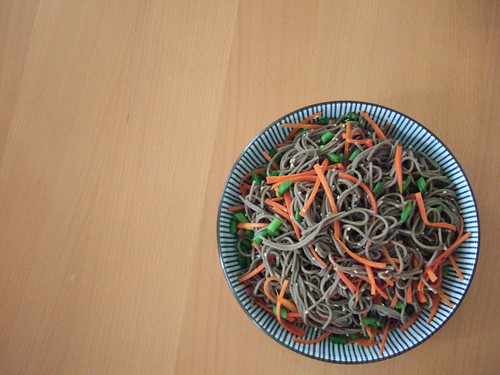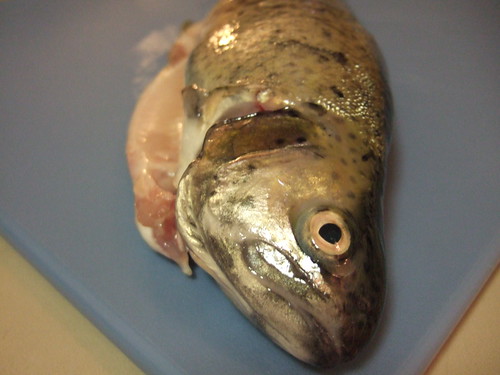Cameron asked me what else she can do with squid. Xe Lua does a really great crispy squid appetizer but most restaurants treat squid like shrimps–they overcook them until they’re chewy and rubbery. And really, calamares can’t be the only way. I once read that you either cook squid for two minutes or two hours. Once you cross that overdone threshold, you have to keep cooking it to soften it.
For this Filipino adobo recipe, you cook the squid for about ten minutes. My father would tell you that you just know when to turn the heat off. Don’t be afraid to poke them with your fork to check the tenderness. At least I can tell you how to clean the squid: slice across the tentacles near the eyes to pull out the innards and the plastic-like spine. You’ll see a small pocket in there which holds the ink. I keep a couple of them intact for color. Discard the rest but keep the tentacles. It’s okay for the tentacles to completely separate from the body. Rinse thoroughly.
Ingredients:
1 1/2 pound fresh squid, cleaned
1 medium head of garlic, peeled, crushed
2 tbsp white vinegar
1 tsp whole black peppercorns
salt1. In a saucepan, bring squid, peppercorns and garlic to a low boil for 5 minutes. The squid will make its own juice from the ink pockets you left intact, so no need to add water. Do not stir.
2. When squid is tender, add vinegar and bring to a second low boil for about 5 minutes. Do not stir. Season with a little salt. Add a little more vinegar to taste.
Related post/s:
Where to buy fresh squid
In Barcelona, baby squid are called chipirones
Crispy squid at Xe Lua






